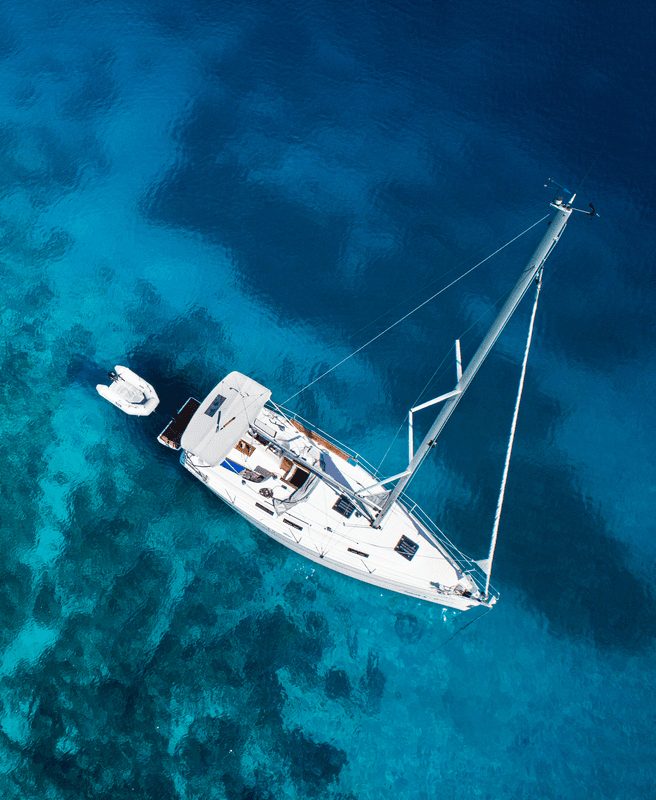Are high interest rates on emerging market currencies worth it?
February 13, 2024
Dateline: Kuala Lumpur, Malaysia
Jim Rickards recently said that with the central bankers’ madness infecting the Australian dollar, there were only three strong, stable currencies left. (Of course, the US dollar isn’t one of them)
However, I’ve long talked about earning high interest rates by depositing money into foreign currency accounts with emerging market banks. This is an adventurous position and can be quite a gamble, no doubt.
But how do you know when it’s worth earning high interest rates in emerging market currencies – and when it’s just a waste of money?
A quick check of the world’s highest interest rates shows an obvious need for caution. You don’t need me to tell you that, no matter how high interest rates are in Iran, you should steer clear (thank the US government for that). 40% inflation rates don’t make saving easy.
Other high interest rate contenders include economic basket case Argentina, where a Chinese bank is offering 22% interest rates on savings. When you wash that interest rate against the country’s high inflation, however, you get just what you would in the bankrupt western world: close to zero.
And, of course, you wouldn’t rely on some sociopathic government’s manipulated statistics, would you?
There can be, however, some intriguing opportunities for depositors who want to maximize their savings with a high interest rate, and who are willing to take the risk of an emerging market currency in their portfolio.
Personally, I see so many great investment opportunities in emerging markets that I’d rather you become a global entrepreneur and make double or even one hundred times your money starting a great business. But for those who want the (hopefully) planned returns of a fixed deposit, here is what I look for.
How I analyze high interest rate deposits in emerging market banks
The first thing to consider is if you want to take any foreign currency risk at all. Plenty of emerging market offshore banks need US dollars, too. If you’re comfortable with a jurisdiction but not with their currency, consider taking a lower interest rate in exchange for eliminating currency fluctuations.
Second, you want to make sure the “offshore” bank is stable. In Mongolia, for instance, there are four major banks, each with their own backers. TDB Bank, for instance, sold a small amount of its equity to Goldman Sachs. Several major Mongolian banks also have decent liquidity figures, meaning they’re actually sitting on a few bucks unlike the House of Cards many American banks are known for.
In countries a little less far-flung than Mongolia, many of the banks offering high interest rates are actually multi-national banks. Different global banks have carved up territory in different regions around the world. For example, HSBC does business in Bangladesh (and just about every other country). Many large European banks such as Raffeisen, do business in many eastern European countries. Barclays has a large presence in Africa.
And so on.
Third, of course, is jurisdictional stability. Emerging market banking and the high interest rates that come with it often compensate for extra risks you wouldn’t worry about back home. While the FDIC is severely underfunded, you can likely count on the government churning out enough paper money to make depositors whole, even if it devalued the dollar even more.
Countries like Mongolia don’t have deposit insurance, so in addition to any currency fluctuations, you’re on your own if the bank fails.
Let’s look at a few emerging market banking options where you can earn high interest rates, along with the pitfalls.
Ukraine has long offered high interest rates to get money in the door, with one-year term deposits in the Ukraine hryvnia paying as much as 18%.
We’ve seen why they’ve been doing that lately, as ratings agencies are cutting Ukranian debt to Greece-level junk status, which should spur a hyrvnia devaluation. Frankly, anyone who knows anything about this market spotted this trend a mile away, and a currency expert friend of mine predicted an 8% devaluation this past spring. It now looks like that hit could be closer to 10%, causing a big hit to a high headline interest rate.
Mongolia has long been an easy place to open a foreign bank account, even for Americans. In some cases, you can even open one by scanning and sending back the account opening forms – from the comfort of your own home.
And the 15.1% interest rates paid on mid-term Mongolian tugrik deposits were quite attractive. Who cares about the rising consumer price index on food when you don’t live there, right?
Well after a few years of relative currency stability against the US dollar, the tugrik has dropped like a stone in recent months. Losses vs. the greenback stand at about 20%, wiping out your interest and then some. For the longest time you figured a currency drop could be made up by renewing the term deposit for another year, but such a substantial drop has freaked a lot of people out.
If you had a one-year term deposit in tugrik, you could roll it over and make another 15% and wait for the currency to straighten out. However, as you can see, such adventurous deposit-making requires a certain psychology to withstand the potential ups and downs.
While Russian banks have paid decent interest rates for some time – and state-run Sberbank is no longer the only institution with deposit insurance – one of the most interesting banking jurisdictions now is Georgia.
I recently put Georgia on my list of emerging offshore banking markets, suggesting it will become a more sought after player in the space as its fortunes and that of eastern Europe rise.
While Georgian banks are a bit more traditional in that they require you to visit to open your offshore bank account, they offer a bit more stability than those in more frontier markets.
In addition to high rates on deposits in Georgian lari, Georgian banks also pay some of the highest interest rates on US dollar deposits available today. One-year deposits can earn around 5%, which was several points higher up until recently (thanks, Ben).
It’s true that you could open an account denominated in Australian dollars in Singapore or Hong Kong or even Australia, and earn about two points less in a more developed banking system. If you don’t transact in Aussie dollars, however, you should consider the currency risks there.
Several of my currency expert friends, including one I met on a flight in Asia, told me long ago the Aussie dollar was overbought and unsustainable. I’m not convinced it’s the right time to buy now, either. I’d rather hold renmibi or take an extra six points and hold Turkish lira.
It’s easy to escape sub-1% interest rates and earn (comparatively) high interest rates overseas if you’re willing to take a bit of currency risk or you trust the jurisdiction. If you have passive cash that needs to generate income, it’s worth checking out if you do your own due diligence.


Is Land Investment Safer?
When American humorist and writer Mark Twain said, ’Buy land, they’re not making it anymore,’ he was definitely on to something. Land is finite, and that scarcity gives it lasting appeal. Yet, despite its obvious logic, land remains one of the most misunderstood investments. Many people are put off by its perceived complexity, potential legal […]
Read more

The Best Countries for Investing in the Middle East 2025
The global investment landscape has changed dramatically. Gone are the days when opportunities were limited by geography or confined to traditional stocks and bonds sold only through standardised, rigid and often cumbersome channels. Back then, going ‘global’ might have just meant adding a few European equities to a US-based portfolio. Today, everything has changed. Barriers […]
Read more

Best Gulf Country for Company Formation and Business Setup
For ambitious entrepreneurs, the Gulf region offers a powerful blend of top-tier banking systems and business-friendly laws that streamline company formation and make the process remarkably efficient. Countries like Bahrain, Kuwait, Oman, Qatar, Saudi Arabia and the United Arab Emirates (UAE) are actively competing to attract the world’s brightest business minds – and it’s working. […]
Read more





